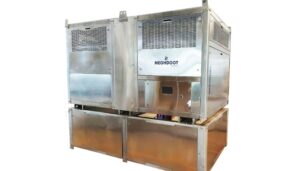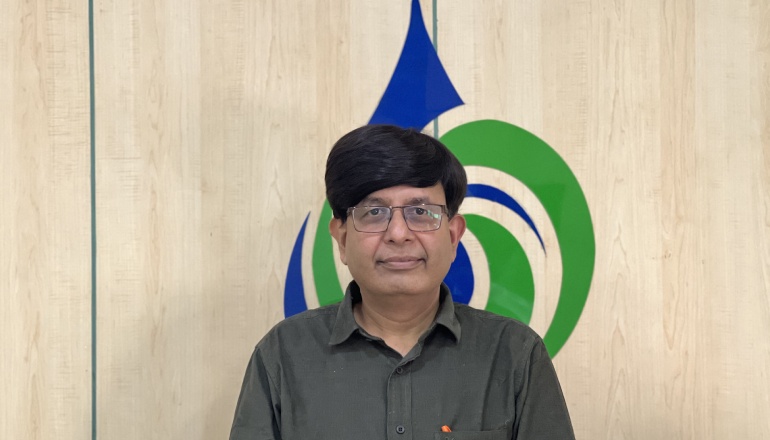Water availability is a growing challenge with fast-depleting sources. Climate events are contaminating water bodies. Changing rain patterns are adding to the woes. But amidst the crisis, organizations like Maithri Aquatech are taking efforts to provide clean potable water to all the corners of the country. Naveen Mathur, CEO, Maithri Aquatech, outlines the company’s plans to address the issue of water shortage and more, in an interview with Renjini Liza Varghese, CEO, WriteCanvas
Drinking water scarcity is affecting both urban and rural India.
The influx of migration from rural areas is adding to the pressure on water infrastructure. The problem isn’t just availability but contamination, as more industries are discharging waste into water bodies without treatment.
As per a Niti Aayog report, 21 major Indian cities will have no water in the next few years. It is predicted that by 2030, the demand-supply gap for water will be 30%. Although the government is taking measures like recycling, reusing, or rejuvenating the existing sources, the only source of water is rain.
What does Maithri bring to the table?

Maithri Aquatech Meghdoot
The value that we bring in is—ours is the only technology globally, that can literally create water from thin air. All other technologies need water as an input to purify it, and in the process, there is wastage (estimates say 70%).
The water produced from the air is the purest. In partnership with the Institute of Chemical Technology, we have developed “dosing salts” to make it mineral-rich. The water is healthy and meets the Food and Safety Authority & WHO potable water standards. Using this technology, we can also produce multiple grades of water—normal water, enriched water, alkaline water, etc.
For a broader reach, we are offering a decentralized solution which is not dependent on water bodies, but is a renewable source of water. In addition it eliminates the need to transport water in plastic bottles, thereby reducing plastic footprint.
What is the capacity of the machines?
We offer a range of machines, from 40 litres to 5000 liters per day. They are modular, so you can increase output by adding more machines. That’s why today, people from the bottling water space are using this technology. A glass of water generated from the air saves at least two glasses for the next generation.
How affordable is the product considering it can be more useful to the rural areas?
Our technology is extremely affordable. The capital cost of generating a litre of water is about 20 paise. Since the machine works on renewable energy, it is more sustainable. We have deployed the machines across communities in rural, semi-urban, and urban communities. A successful example is a woman from a village near Bengaluru who spent hours traveling to fetch water and had 24×7 access after installing the machine.
In another instance, a machine deployed using renewable energy has significantly reduced operational costs.
In yet another example, ONGC has reduced a significant amount of operational costs by cutting down on the number of helicopter trips to fetch drinking water. The PSU is planning to install our technology on more rigs.
Many corporates are implementing our technology in rural areas as a part of their CSR initiatives. Similarly, we have installed the machine in schools to ensure clean and safe water throughout the year.
Humidity plays a crucial role in AWG. How does it work in low-humid terrains?
Water generation is a function of both temperature and humidity. If you have higher temperatures and low humidity, you can still generate water. We’ve built systems specifically for deserts. We attribute 15 percent of revenues/profit to R&D. Presently, we are collaborating with 30 institutes globally to constantly improve our technology.
What kind of maintenance does the machine require?
Very nominal. It’s a plug-and-play solution. You need to clean the filters every 6 months, and if you are using any additions to the water, like minerals or dosing salt mixture, then replenishing is required.
What’s your target for scaling?
We are already present in 30 countries and counting. Water is an existential issue, not just for human beings, but also for flora and fauna. We are very sure and confident that it is going to be the next Fortune 500 company.
What are the major challenges?
The key challenge is the lack of awareness.
We have worked with some of the largest Fortune 500 companies like Google, Amazon, Microsoft, and SAP, to name a few. There’s a lot of word-of-mouth publicity and media coverage about projects completed for the public domain.
Do you think a policy-level push from the government would accelerate?
Government policy support could be a game-changer.
Renewable (wind and solar) energy today gets a lot of policy support from the government because globally, they are aligned. When it comes to power, you have multiple sources of power. The problem is far more complicated when it comes to water.
Considering the challenges in drinking water, the government is looking at technologies to expedite the reach of potable water to all corners of the country. We are closely working with the Ministry of Jalshakti.
We are also involved with various policy-level discussions.
Are you looking at tie-ups with Wash lenders to reach the maximum areas?
Yes, we do work with organizations and try to grow with partnerships so that we can increase the impact of our interventions. We are working with USAID, NGOs, and communities to expand the outreach.
What’s your ultimate goal for Maithri Aquatech?
We’re already in 30 countries, and we’re just getting started. Water is life, and we’re confident that Maithri Aquatech will become a global leader in water security, shaping a sustainable future for all.

